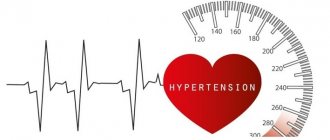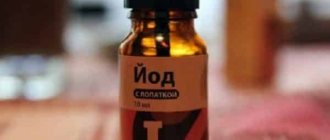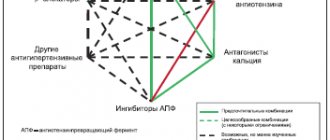Low body temperature (hypothermia) is the same unpleasant and dangerous phenomenon as high temperature, and indicates a malfunction of the body. Almost everyone knows what to do if they have a slight fever, but the mercury column, which drops below the usual 36.6°C, often confuses a person.
Body temperature is considered low if it is below 35.5 – 35°C. In some cases, this is just an individual characteristic of the body, but sometimes hypothermia is one of the symptoms of a serious illness.
How can hypothermia manifest?
It is necessary to measure your temperature if you notice the following symptoms:
- increased fatigue and drowsiness, which is difficult to cope with on your own;
- feeling overwhelmed;
- nervousness, irritability;
- you find it difficult to concentrate.
Children with low body temperature experience tearfulness, lethargy, moodiness, and lack of appetite.
Do not forget that the objectivity of the thermometer readings largely depends on the time of day, age and even the location of measurement. For example, in the morning, after sleep and long rest, body temperature is always slightly lower than usual.
Dangerous factors of changes in thermometer readings
Normal body temperature is 36.6 degrees (in the evening this figure can rise to 37 degrees). Normal blood pressure is around 120/80 mmHg.
But sometimes these values decrease or increase. At the same time, your well-being changes. The reasons for deviations may be different.
One of the most harmless ones is fatigue. But often the condition worsens with the development of serious illnesses. The speed of biochemical reactions depends on the level of thyroid hormones. If, for no apparent reason, a person begins to suffer from weakness and low blood pressure, this indicates the presence of endocrine disorders. At the same time, weight changes, apathy and memory impairment are also observed.
Diabetes mellitus is accompanied by a decrease in the rate of glucose oxidation. As a result, body temperature drops slightly. This pathology is also characterized by frequent urge to urinate, severe thirst, and decreased sensitivity in the legs and arms.
If you experience low body temperature and high blood pressure at the same time, this may indicate the presence of liver disease.
This condition is explained by the fact that the body’s ability to absorb carbohydrates is reduced.
The glycogen content in the blood decreases. A deficiency of this substance is perceived by the body as a critical situation. The response is to try to reduce energy expenditure by lowering body temperature.
People who suffer from heart failure usually experience low blood pressure, low temperature, weakness, and dizziness. A slightly low temperature with unstable blood pressure may be the first symptom of developing oncology. Over time, the thermometer and tonometer readings drop even lower due to weakening of the body.
Sometimes low temperature and blood pressure occur after taking sedative medications. Long-term use of certain medications leads to a weakening of the human body and a decrease in the tone of the walls of blood vessels.
So, low or high blood pressure and low body temperature may have different causes. If this condition continues for more than three days, it is recommended to consult a doctor. Timely diagnosis and treatment will help quickly eliminate the unpleasant manifestations of the disease and avoid complications.
Causes of low temperature
- Exacerbation of chronic diseases, for example, vegetative-vascular dystonia.
- Insufficient production of thyroid hormones – hypothyroidism.
- Pathologies of the adrenal glands.
- Pregnancy.
- Taking certain medications, especially antipyretics and vasoconstrictors.
- Low blood pressure, heart disease.
- General fatigue, poor sleep, depression, stress.
- Recent viral or bacterial infections.
- Anemia.
- Fasting and strict diets that caused a lack of vitamins and nutrients.
- Sepsis.
- Skin diseases affecting large areas of the body.
- Poisoning with alcohol and drugs.
- Presence of HIV infection.
There are also external reasons for a decrease in body temperature - a long stay in water, in the wind, in a cold room with drafts, staying in the same position.
Diagnostics
Visually, even the most experienced doctor is not able to accurately diagnose pathology.
After all, there are many diseases that are characterized by low temperature, low or high blood pressure. Therefore, the endocrinologist prescribes a series of examinations based on the patient’s clinical picture and complaints. An ultrasound of the thyroid gland is usually performed.
They are also sent to donate blood to determine the level of thyroid hormones. If there is a suspicion of kidney pathology, a general analysis of urine, a biochemical blood test, and an ultrasound of the kidneys are done.
What can you do before seeing a doctor?
Raising your body temperature must be done very carefully. A sudden change in thermal conditions can lead to serious consequences.
- If the cause of low body temperature is hypothermia, place the frozen person in a warm room, change him into dry clothes, cover him with a blanket and give him warm sweet tea.
- Hot baths, tea, and intense rubbing of body parts can be harmful. Drinking strong alcoholic drinks is also highly undesirable.
- A small child should be fed, given a warm drink, hugged and warmed with your own warmth.
- If you're just overtired, take a break from what you're doing. Take two or three days off: get enough sleep, take a bath, walk in the fresh air. After such a complete rest, normal body temperature will be restored naturally.
Low temperature and blood pressure
For hypotension
Reduced readings on the thermometer and tonometer are characteristic of hypotension.
In this case, the state of health usually worsens for a long time. There are many people whose blood pressure and temperature are below the established standards.
But at the same time they are efficient and energetic, they do not show any deviations in their health. For this category, underestimated indicators are considered the norm.
But if a person has always had a temperature of 36.6 degrees and a blood pressure of about 120/80 mmHg, and recently these values have decreased, we can talk about the development of hypotension.
The development of hypotension is caused by various reasons:
- severe stress;
- liver diseases;
- high psycho-emotional load;
- serious blood loss;
- chronic fatigue;
- disturbed sleep patterns;
- low hemoglobin level;
- cardiovascular pathologies;
- neurological abnormalities;
- changes in hormonal levels. For example, due to pregnancy, taking hormonal medications;
- prolonged and intense physical activity. Many miners, heavy industry workers, and athletes suffer from hypotension.
At low pressure and temperature values, the patient feels chilly and drowsy. The skin turns pale, the limbs become cold. With further development, the disease is aggravated by fainting and headaches.
To improve your health with low blood pressure, you need to identify the cause of hypotension. To do this, you need to see a doctor. At the initial stage of the disease, soft therapy is used, which is based on the principles of homeostasis.
Healthy eating is the key to health
If hypotension occurs as a result of severe emotional and physical exhaustion, fatigue, it is easy to improve your health by following a number of simple rules:
- healthy eating. To create an internal reserve of strength to fight pathology, you should eat foods that are rich in minerals and vitamins;
- full sleep, which lasts at least eight hours. It is important that the energy spent during the day can be fully restored;
- compliance with the daily routine. Allows you to stabilize the processes occurring in the human body;
- Take regular walks in the fresh air and do light jogging. All this will help restore elasticity to the blood vessels, slightly increase body temperature and tonometer readings;
- taking herbal sedatives and antidepressants;
- avoidance of stressful situations.
Doctors often recommend stimulant medications to increase body temperature and blood pressure. These include caffeine-containing tablets, natural honey, raspberry tea, Chinese lemongrass, hawthorn, eleutherococcus, and ginseng.
Sometimes it is easy to overcome hypotension at the initial stage of its development by revising your lifestyle and nutrition. It's much better than taking hypertension pills. Because the body recovers on its own.
For hypertension
With hypertension, the temperature rarely decreases. If the thermometer readings are below normal, this indicates the presence of a serious pathology.
For example, about heart problems, endocrine disorders. Often this condition is observed with vegetative-vascular dystonia.
Low temperature and high blood pressure occur when there is a malfunction in some organs. For example, with pathologies of the thyroid gland, adrenal glands, and impaired renal function.
Often, hypertensive patients try to improve their well-being by independently selecting medications. This cannot be done. Otherwise, the condition can get much worse. It is worth contacting a highly qualified endocrinologist.
When is urgent medical attention needed?
- The thermometer shows 35°C, and the temperature continues to fall.
- A decrease in temperature is accompanied by bleeding, vomiting, speech and vision disturbances, loss of consciousness, hallucinations, severe yellowing of the skin and whites of the eyes.
- The temperature is reduced in a child or an elderly person and is combined with general poor health.
- There are signs of hypothermia: pale skin, bluish nasolabial triangle, chills, shortness of breath, rapid pulse, lethargy.
- Low temperature is especially dangerous for elderly and seriously ill people.
Prevention of low body temperature
- If you have chronic diseases, carefully monitor your well-being. Visit your doctor regularly and follow all his instructions.
- Strengthen your immune system. Eat a balanced diet and take a course of vitamins at least twice a year – in autumn and spring.
- When relaxing on the sea or river, do not stay in the water for too long. When you go ashore, immediately dry yourself with a towel. Small children should be changed into dry clothes immediately.
- Do not create drafts in the apartment. 10-15 minutes for ventilation is enough.
- Always dress appropriately for the weather. Don't be outside in wet clothes.
- If, due to circumstances, you are forced to spend a lot of time in the same position, give yourself five-minute exercise sessions at least once every two hours.











